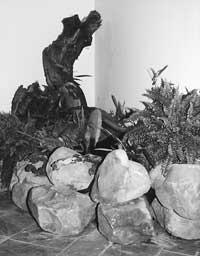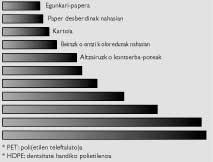“Despite being in the age of electronic communications, more and more paper is being consumed”
1998/05/01 Bengoa Ansa, Aitor Iturria: Elhuyar aldizkaria
Among the conferences and round tables organized in the framework of the Alameda days, the most massive was the one offered by the forestry engineer Miguel Matey. Mr. Matey is a man who is working hard around recycled paper and is currently one of the directors of Trash Peninsular S.A. His career began in forestry and is currently engaged in the production and marketing of paper products.
In recent years he has worked on the development of the project called 2.000 of the BEC, which will soon open its doors the new factories that will carry out this project. It will produce the so-called publication or press paper. They aim to produce paper with the least possible environmental impact, taking into account the impacts that occur throughout the process; the raw material will be the paper used and will also reduce water pollution and damage to solid waste.
According to Matey, there are currently enough technologies to produce recycled paper with less pollution: “The first production of recycled paper generated great pollution, but today, and taking advantage of the most modern technology, we can say that production is clean.”
As for raw materials, it seems to have things clear, “if we want to play a role in a big city like Madrid, we have to go to the street in search of cellulose fiber, and it makes no sense, meanwhile in the city landfills there is so much paper, exploiting forest trees to make paper. In Sweden, for example, wood will be the raw material because it is cheap and affordable, but in Madrid or any other big city these production models cannot be used.” The manufacturing process is not affected by the use of “first-hand” or recovered fiber: the costs are the same as the quality of the product.
The difference lies in the logistics necessary to obtain this fiber, that is, the collection of paper to manufacture recycled paper, separation of inks, staples, etc. If we want wood fiber, the first thing we have to do is buy wood and get fiber from it. Hence, depending on local conditions, there is one type or another of paper.
Mr. Matey also provided another data of great technological interest: “Today we do not know how many times fiber can be recovered and reused; the use of paper has much to say, since it does not spoil equally in all activities. However, in the tests we have carried out we have been able to verify that although fiber is used ten times, for example, no paper of worse quality is obtained.”
Of course, the basis of recycled paper is a good collection of used paper, and the current legislation does not favor the production of this type of paper, “the administration has competencies in the field of paper collection in cities and streets, and to us, the bins, put many obstacles in this collection work. We in particular make agreements with the municipalities, but from the regional administrations in some cases there are many problems”.
On the other hand, the paper manufacturer also dedicated himself to clarify the details of the word “ecological”, so used today; “we do not make paper “ecological” but recycled. Ecology is a science so we will hardly find “ecological” products. Recycling, on the other hand, is a technology in which we base ourselves on paper.”
Looking ahead, he was very optimistic, ”2010. Paper consumption will be much higher than the current one in 2000, when we live in the era of electronic communications, paradoxically, more and more paper is consumed, since, in short, we want to see our documents physically on paper and, therefore, henceforth, the ‘paper’ of recycled paper will be increasingly important”.

Gai honi buruzko eduki gehiago
Elhuyarrek garatutako teknologia





